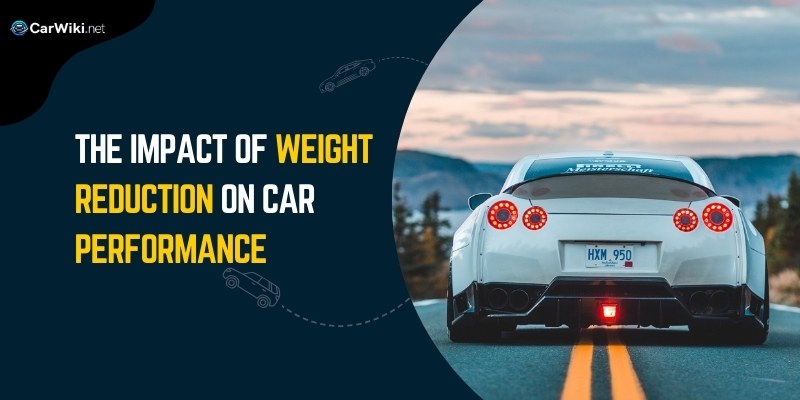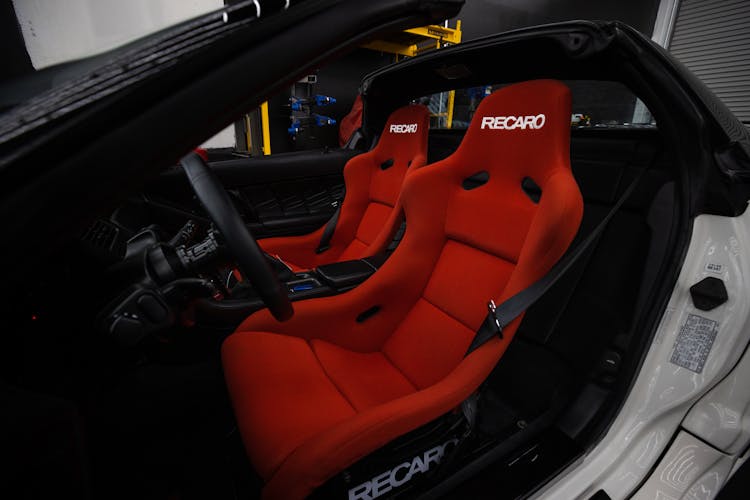The Impact of Weight Reduction on Car Performance

The impact of weight reduction on car performance is a constant pursuit for car enthusiasts. Let’s dive into how shedding pounds impacts handling, acceleration, and more!
Picture this: two absolutely identical cars, except one weighs a few hundred pounds less. It’s a no-brainer which one will rocket off the line faster, whip around corners more eagerly, and feel downright magical to drive.
For us car enthusiasts, weight reduction is a bit of an obsession.
See, less weight is the key to unlocking a car’s hidden performance potential. But where do you start shedding those pounds? And how drastic do you need to get to really feel the difference?
Let’s dive in and find out!
Why Car Weight Matters

Okay, when we talk about weight reduction, it’s not just about the number on the scale. Where those pounds are located matters a ton! Here’s why:
Rotational Mass
This is the biggie. Wheels, tires, brakes… anything that spins takes extra effort to get moving.
Every ounce saved here feels like a huge performance boost compared to shedding weight from the trunk, for example. It’s why lightweight wheels are such a popular upgrade.
High vs. Low
Think of weight like cargo on a ship. The more weight high up (like a bulky spare tire on the roof), the worse the handling gets.
Ideally, you want as much weight as possible down low in the car, which helps it feel more stable and planted in corners. That’s why we recommend a station wagon vs a crossover if you need to haul things around without sacrificing on handling.
Distribution Matters
Weight balance between the front and rear axles drastically affects how a car turns in and its traction out of corners.
Some cars are naturally well-balanced, while others need some tweaking to dial in the perfect setup.
Let’s move on to the practical stuff: how to actually lighten your car:
Methods for Weight Reduction for Car Performance

Now for the fun part: how to actually ditch those extra pounds!
There’s a spectrum here, from easy DIY jobs to the kind of stuff that turns your car into a track weapon (but maybe not the best daily driver).
Easy Wins
Start simple. Clear out junk from the trunk, ditch the bulky spare tire (if you have roadside assistance), swap in a smaller, lighter battery. You’d be surprised how much random stuff adds up!
Also if you have backseats that are never used, you can get rid of them as well.
Beyond the Basics
This is where things get interesting – and more expensive. Think lighter seats, carbon fiber hoods, removing interior panels, and sound deadening.
Each bit you remove saves weight but also makes the car noisier and less refined.
Extreme Measures
We’re talking race car territory here: plexiglass windows, a completely stripped interior, cutting out unnecessary bits of the chassis (please only do this if you REALLY know what you’re doing).
At this point, you’re sacrificing a lot for maximum performance.
Let’s be real though – there are trade-offs to all of this:
Trade-Offs and Considerations

Before you go on a weight-loss rampage, let’s talk about the less glamorous side of things:
- Cost vs. Benefit: Lightweight parts ain’t cheap. You might shell out a bunch of cash for a few pounds saved. It’s about finding what makes sense for your budget and goals.
- Safety Concerns: Removing airbags (not recommended and it’s probably illegal in your country/state anyway), messing with the car’s structure… that’s a recipe for disaster. Performance gains aren’t worth risking your safety out on the road.
- Comfort & Convenience: Want to blast your favorite tunes and enjoy a comfy ride? Well, a car stripped down for track duty won’t be great at that. Decide how much you’re willing to give up for those extra few tenths of a second on your lap times. Especially if you have lower back pain.
So what now?
Well, it’s up to you now to decide if you’re going to start pulling things out of your car. As you can see, the impact of weight reduction on car performance is related to how much you’re willing to throw away.
The fact of the matter is…
Weight reduction is one of the most powerful tools in an enthusiast’s toolbox.
Even if you’re not building a track monster, shedding a bit of weight can make your car feel more alive on your favorite twisty road.
Related article: Best Driving Roads in the US
The best approach is holistic. Combine some sensible weight loss with a bit more power and some choice suspension upgrades, and you’ll transform your driving experience.
The key is finding the sweet spot between performance and the practicality you need.
Just remember, sometimes the most fun car isn’t the absolute fastest, but the one with the best balance!
Have you tried weight reduction on your car? What difference did it make? Share your experiences in the comments below!